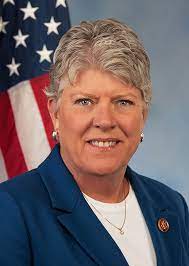WASHINGTON — VA has been criticized as suffering from a “broken culture” where employees do not feel comfortable coming forward about safety concerns, resulting in problems going unresolved and tragedies that could have been prevented.
Agency overseers told Congress last month at a hearing of the House VA Health Subcommittee. VA leaders faced a skeptical panel of legislators who were responding to years of oversight reports and a series of high-profile incidents at VA medical facilities that resulted in patient harm or death.
“Many of us are familiar with what happened in Clarksburg, West Virginia, where a former VA nursing assistant is now serving seven consecutive life sentences,” declared Rep. Julia Brownley (D-CA) in her opening statement. “While working the night shift at a VA inpatient facility, she injected patients with insulin they didn’t need, and which the VA facility did not secure, and killed them. In another widely reported case, a VA pathologist in Arkansas concealed his alcoholism and subverted VA’s quality management processes, while facility-level leaders ignored concerns that had been raised by staff. While employed by VA, the pathologist misdiagnosed more than 3,000 patients, causing serious harm for 34.”
In both of these cases, failures by facility staff and leaders to report or respond to concerns about the patients or employees in question were identified. Examining VA officials’ written testimony submitted prior to the hearing, Brownley was unimpressed.
“The tone of VA’s testimony this morning seems to be one of defensiveness, not one of an organization that has taken a hard look at itself and embraced the kind of humility and individual accountability it is seeking from its front line employees,” she declared.
Defensiveness from VA officials is something that the VA Office of Inspector General (OIG) has been cited as one of the barriers to solving these recurring patient safety issues.
“There’s a clear underlying theme surrounding these near misses, risks and tragedies. There appears to be a broken culture that results from the actions, and more often inaction, of those leaders,” explained Deputy Assistant IG Julia Kroviak. “Only when the culture is laser-focused on patient safety; only when the culture makes it safe to report concerns; only when leaders respond to those concerns with urgency; and only when leaders hold themselves and their staff accountable for missteps can VA truly promise patient safety. Sentiments describing patient safety failures as one-offs and the use of defensive or deflective language will undermine the initiatives … and opportunities to learn and improve will be lost.”
Asked what actually “moves the needle” on improving patient safety, Kroviak told the committee that it begins with leaders making it clear that patient safety is a priority.
Missed Opportunities
“We see missed opportunities at various levels to intervene when they see something wrong,” she explained. “[The solution is] leaders prioritizing speaking up and addressing issues with some level of urgency to either prevent further opportunities for risk and harm or promote that culture more vigorously than it’s ever been promoted before.”
The problems go beyond culture and extend into the system wide structure of the department, noted Sharon Silas, director of the Government Accountability Office’s (GAO’s) Health Care Team.
“The number and repetition of recommendations we’ve made to address deficiencies in oversight and accountability are symptomatic of larger issues overseeing the effort of delivering healthcare at medical centers,” she explained. “I do think the cultural issues are a big problem, but also there are structural issues when it comes to oversight and accountability. A lot of these patient safety issues that come up in the medical centers are handled in the medical centers and there’s not enough visibility up within the networks or the central office to ensure that not only are the providers being held accountable but also the directors of the medical centers.”
VA officials testified that the department has committed to a long-term transformational process that will address both the cultural and structural issues. In February 2019, VA began an enterprisewide initiative—the high-reliability organization (HRO) journey to zero harm. The HRO effort is described as an in-depth assessment of the VA care environment, identification of what gaps in care and safety exist and the filling in of those gaps. The end goal involves both structural and cultural change, VA officials said.
“The HRO journey is a cultural transformation,” explained VA Assistant Under Secretary Renee Oshinski. “We know from facilities outside of VA that have undertaken this that it takes years—five years or more—to achieve that kind of transformation. So we are in the early stages. We began ambitiously in 2019 with 18 facilities. … And then very rapidly expanded it in 2020 and 2021 to 72 facilities. In 2022, plan to expand the rollout to the remaining medical centers. All 170 will be beginning or on the road to achieving higher reliability this year.”
In the meantime, Oshinski assured legislators that, regardless whether a facility was currently undergoing the HRO initiative, it would benefit from the HRO frameworks being created. She also stated that, throughout the VA system staff and leadership were aware that they had a responsibility for patient safety.
“When we look at our reliability journey, every employee has a role. [All VA leaders] have a responsibility to look into their particular arenas to make sure we’re dealing with patient safety. Whether that’s dealing with untoward events or whether it’s developing tracking systems or oversight of any variety of things that are happening.”


